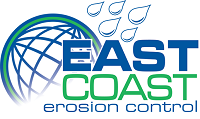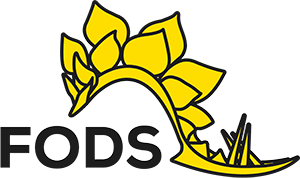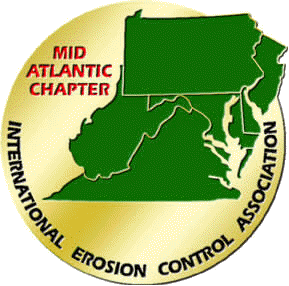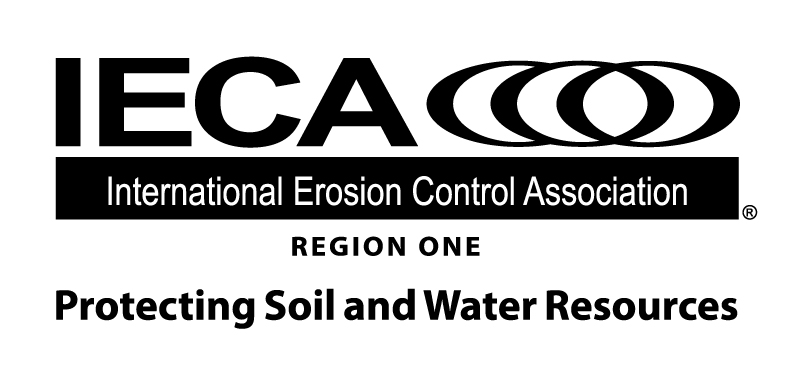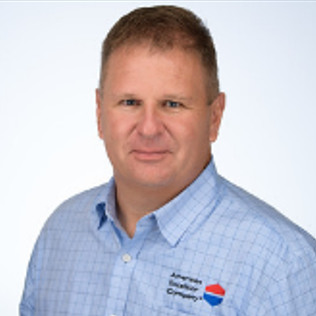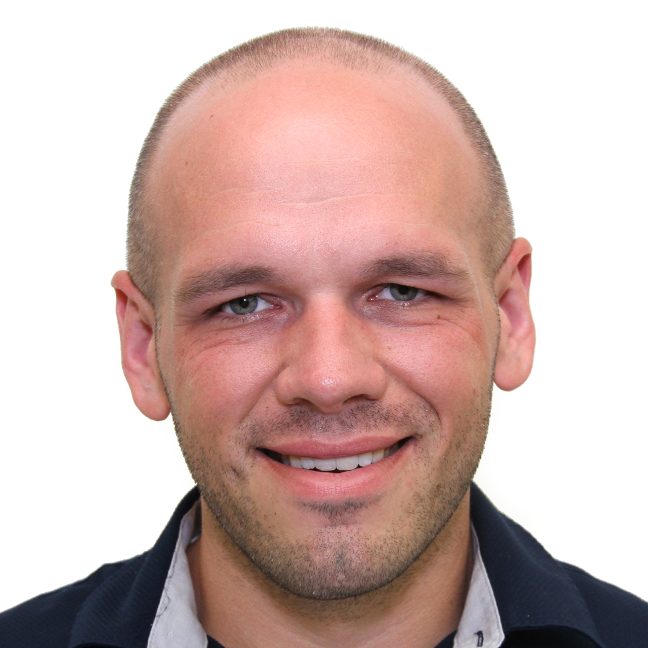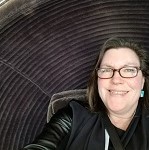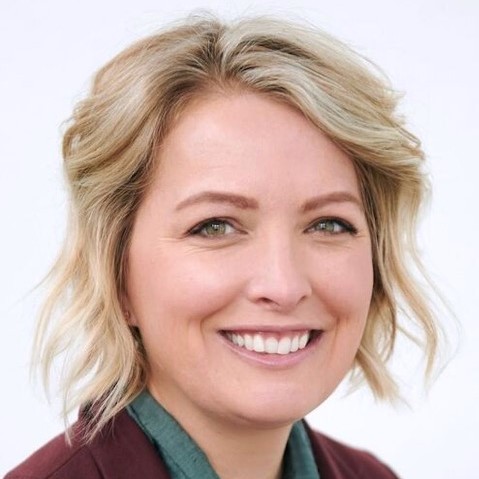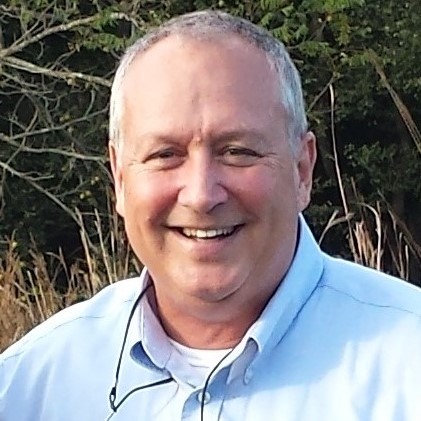Don Elly, CPESC, CISEC
VP, Environmental
Allan Myers
Don’s career includes over 30 years of Operations leadership, including P&L and overall Stormwater Compliance responsibility, in multiple Construction Industry sectors (Energy, Commercial, Residential, Heavy Highway). Most recently, he assumed the leadership role for Environmental Compliance at Allan Myers, the Mid-Atlantic region’s largest Heavy Highway Contractor and Aggregate and Asphalt supplier. Don serves on the Boards of the Perkiomen Watershed Conservancy and ACE Mentor Greater Philadelphia, loves to fish, and resides with his wife of 36 years, near to his children and 6 grandchildren, in Southeast Pennsylvania.
Craig Shultz
Business Development Manager
Mr. Craig Shultz is employed by American Excelsior Company - Earth Science Division - Arlington, TX, as the Business Development Manager. Mr. Shultz graduated from the University of Kansas. He has worked on numerous E&S control projects and has experience with rolled erosion controls blankets, Turf Reinforcement Mats, hydraulic mulches, Alternative Daily Landfill Cover and other erosion and sediment control products. He is an active member of ASTM where he serves as the Chairman of Task Group D18.25.08 (Sediment Control). Mr. Shultz participates in the Erosion Control Technology Council (ECTC). In addition, Mr. Shultz is an industry member on the National Transportation Product Evaluation Program (NTPEP) Technical Committee on Erosion Control Products and Sediment Retention Devices.
Lisa Simms, PE CPESC, PE CPESC
Technical Sales Manager
Lisa Simms has a bachelor’s degree in civil engineering from Auburn University. She is a registered Professional Engineer in the State of Georgia and a Certified Professional in Erosion & Sediment Control. Lisa serves as the Technical Sales Manager for East Coast Erosion Control and is responsible for providing technical assistance and training to SWPPP designers, implementing the East Coast Erosion Control QC/QA program and ensuring that East Coast Erosion Control provides top of the line products. Her consulting experience includes 7 years of civil site design, 2 years of geotechnical & construction materials testing and has also spent 8 years in technical sales.

Jeffrey Popp
Senior Program Officer, Restoration
Jeffrey Popp joined the Chesapeake Bay Trust in March 2016 and leads the Green Streets Green Jobs Green Towns, Anne Arundel County Forestry and Forested Land Protection, and Montgomery County Stormwater grant programs. Before coming to the Trust, Jeff was the Land Restoration Manager and Manager of Conservation Projects with the Wildlife Habitat Council where he coordinated, designed, and managed on-the-ground corporate habitat restoration projects in rural, urban, and corporate settings. Jeff has also worked for the Maryland Department of Natural Resources and continues has continued his role as volunteer Co-Director for the Terrapin Institute since 2003, where he works to help protect terrapins and other species of turtle in Maryland. Jeff enjoys helping landowners navigate and overcome the challenges of creating successful restoration projects that benefit wildlife, water quality, and surrounding communities.
Jeff has over 15 years of experience in wildlife habitat design and restoration, conservation education, and environmental outreach and specializes in native plants of the Mid-Atlantic region, reptiles and amphibians, native pollinators, and habitat restoration. He has served on Governor appointed task forces relating to reptile, amphibian, pollinators, and fisheries conservation and remains active in natural resource and conservation issues on national and local levels.
Jason Bailey, PE
Product Line Manager
Jason Bailey, previously with Brentwood Industries (StormTank), is the General Manager and Civil Engineer for All County and Associates, Inc. Jason has a degree in Structural Design and Construction Engineering Technology from Penn Sate and is a licensed engineer in Pennsylvania. During the past 8+ years, he lead the sales and engineering growth of Brentwood’s StormTank Product Line. This included the development of multiple products, increased engineering support and product testing. Previous roles provided him a unique experience level and stormwater understanding, as he served as a Regulator and Civil Designer, before Brentwood.
Corey Simonpietri
Director of Stormwater Management
Corey has been involved with stormwater for over 25 years at ACF Environmental. Currently he serves as ACF’s Director of Stormwater Management, bringing to market emerging technologies that improve the management of stormwater. He has served on the board of Directors for the central Virginia Green Building chapter, the Technical Committee for the Rappahannock River Basin Commission, the STEPP Work Team, and has spoken at numerous conferences and instructional classes throughout the country.
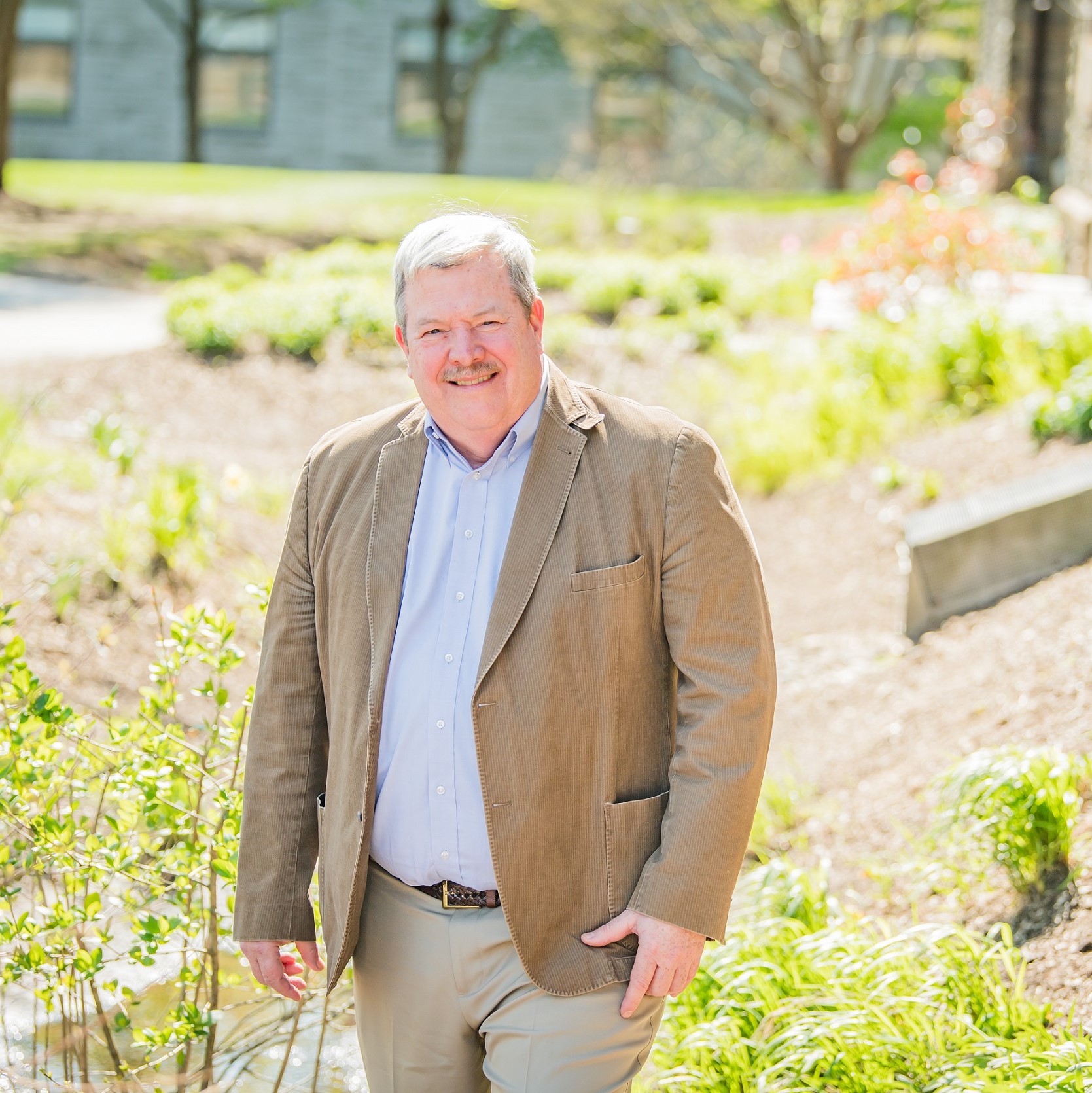
Robert Traver, Ph.D., PE, D.WRE, F. ASCE
Professor of Civil Engineering, Director of the Villanova Center for Resilient Water Systems
ROBERT TRAVER is a Professor in the Department of Civil and Environmental Engineering at Villanova University, and founding Director of the Villanova Center for Resilient Water Systems. His current research is to advance the performance of green stormwater infrastructure through understanding the engineering unit processes, and subscribes to the Teacher – Scholar model bringing his research to his students. Dr Traver initiated the Stormwater Control Measure Demonstration and Research Park on the Villanova Campus. Dr Traver served on ASCE’s External Review Panel (ERP) of the Corps investigation of Hurricane Katrina, and was a member of the National Academies Committee entitled Reducing Stormwater Discharge Contributions to Water Pollution. Dr Traver received his BSCE degree from the Virginia Military Institute, his MCE from Villanova, and his Ph.D. from The Pennsylvania State University. He continues to serve the profession as an associate editor of the ASCE Journal of Sustainable Water in the Build Environment.
Joe Belmonte
Business Development Manager
Joe Belmonte is the Business Development Manager for Environmental Construction Solutions. He has been in the construction products industry for nearly two decades, with a focus on turfgrass and erosion control for the last eleven years. Joe is a Certified by Virginia DEQ as a Program Administrator for Erosion & Sediment Control and Stormwater. He holds a Certificate of Sustainability from Virginia Commonwealth University, and is a graduate of Hampden-Sydney College in Virginia. Joe has worked with engineers, municipalities and contractors on some of the Mid-Atlantic’s most challenging vegetative areas including landfill closures, solar farms and mine reclamations.
Nancy Schumm, CPESC, CPMSM, PWS
Department Manager, Water/Environmental
Nancy Schumm, PWS, CPESC, CPMSM is the award-winning author of 2 books on natural areas and plant history and 3 books on regional history. Nancy has been lecturing and presenting professional papers on environmental topics nationally and internationally since 1997. As a Department Manager in Baltimore for PRIME AE Group, Inc. Nancy manages the team that conducts forest and wetland delineations, and the wide array of permits for environmental issues in Maryland. In her spare time, Nancy can be found roaming around forests and sometimes hugging trees.
Lauren Alaniz
Director of Sales
Lauren Alaniz is the Director of Sales at ECBVerdyol, a manufacturer of erosion control and revegetation products. She has worked in the erosion control industry for fifteen years, with a focus over the last decade in achieving successful vegetation on project sites across the country.
She has a BA from the University of Texas at Austin in Cultural Anthropology... which means it makes perfect sense that she now works in the erosion control industry.
Eric Buehl
Regional Watershed Restoration Specilist
Eric Buehl has been with University of Maryland Sea Grant Extension since the fall of 2014 and is a Regional Watershed Restoration Specialist with the University of Maryland Sea Grant Extension Program. He serves five counties of Maryland’s mid and upper Eastern Shore including Caroline, Talbot, Queen Anne’s, Kent, and Cecil. As part of the Watershed Protection and Restoration Program, he provides technical assistance and outreach to all levels of government, non-profit organizations, and communities seeking solutions to a variety of water quality issues. Eric’s background is in stormwater management, habitat and water quality restoration project design and implementation, and land surveying. Eric served as a founding member and was the first MAC Chapter president back in the 1990s. He resides in Talbot County, Maryland in the town of Queen Anne with his wife and two daughters.
IECA's Group Watch Feature is designed to save you money while still delivering our world class education. The cost is one connection at full price and then each additional connection within your organization is $15. You must be part of the same organization to purchase group watch. To purchase the group watch for your organization, please contact jack@ieca.org.
Key:

Complete

Next

Failed

Available

Locked
Mid-Atlantic Chapter of IECA - Welcome
Recorded 2020/09/13
Contractor Corner - How I Achieve Consistent Stormwater Compliance
Select the "View On-Demand Recording" button to begin.
Select the "View On-Demand Recording" button to begin.
Sponsored by: American Excelsior, East Coast Erosion Control & Western Green
This panel discussion will feature practical, interactive, and unscripted discussion among recognized leaders in the Contracting, Engineering, Regulatory, and Stormwater Inspection sectors around some of the most common Stormwater Compliance challenges and solutions. Panelist will share their personal compliance experiences and trials and tribulations for everyone’s education, including the most recent challenges posed by our current Pandemic.
Dam or Filter – What’s the Difference When it Comes to Sediment Control?
Recorded 2020/06/09
Recorded 2020/06/09
Sediment control solutions in the best management practice (BMP) toolbox are plentiful today. Both natural and manufactured options exist. Selecting the proper solution for a project can be challenging at times because there are so many choices. One key factor of sediment control products is whether or not they allow stormwater through them. Sediment control products can be separated as damming and filtering products. Filtering products are defined as those with a flow rate of ≥35 GPM/ft2 according to ASTM D5141. Damming products are designed with a flow rate of < 35 GPM/ft2. Matrix density is also an important factor to consider that is related to the flow rate of the sediment control solutions. Damming and filtering products react differently during hydraulic events. As a result, the products have their limitations and are not interchangeable. Benefits of each type of sediment control products will be discussed along with performance differences in various applications.
Erosion Control Products: Supporting the Environment from Beginning to End
Recorded 2020/08/24
Recorded 2020/08/24
Manufacturing and environmental consciousness have often been on opposite sides of the fence. The erosion control manufacturing community has found a way to bring them together. Many of the producers of erosion control solutions, now offer products with recycled components, source rapidly renewable raw materials and provide biodegradable options. Plastic has become a nuisance for the environment. It is taking up space in our landfills, clogging our waterways and posing a threat to both land and water wildlife. Polypropylene is a matrix often used in turf reinforcement mats. Many of the turf reinforcement mats producers now offer a polypropylene netting and/or matrix that has a percentage of recycled content. As a society we are not ready to go plastic free, but this is a way to help reduce the amount of it heading to our landfills and into the environment. Some producers have also started using matrix components that fall out of blankets and re-using it in sediment retention fiber rolls to reduce the amount of waste. The definition of rapidly renewable materials according to the CSI Construction Product Representation Practice Guide is “manufactured from plant crops that are harvested on a ten-year or shorter cycle”. Three materials often found in rolled erosion control products and sediment retention fiber rolls is straw, coir (coconut) and jute. Our open weave textiles are made from coir as well. Coconuts trees produce 50-100 coconuts per year with the harvesting cycle on a 45-60-day cycle. Straw can be harvested every year and is typically widely available. Jute can also be harvested every year. Another way Erosion control product manufacturer are being good stewards is offering 100% biodegradable products. Not only are there readily available products with biodegradable matrixes of straw, coir and excelsior, but woven jute is now being used in place of plastic netting. The goal of these products is to reinforce and help establish vegetation. After they have done their intended job, they will breakdown and provide nutrients to vegetation it helped establish. In closing, we already know that erosion control products support natural vegetation and filter pollutants out of stormwater, but it is also important to see how these manufacturers are keeping the environment in mind before the trucks leave our plants. Our processes help reduce waste by using recycled material and re-using materials when possible. Using rapidly renewable materials mean that manufacturers are thinking about the long-term implications of their processes. Producing biodegradable products means we understand the evolving needs of the specifiers and regulators. As a production community we are all striving to support the environment from the beginning through these principles to the end by supporting natural processes in the field.
Grant Opportunities for Watershed Restoration, Stormwater Management, and Community Engagement with the Chesapeake Bay Trust
Select the "View On-Demand Recording" button to begin.
Select the "View On-Demand Recording" button to begin.
Sponsored by: FODS LLC, Jobsite Products, Environmental Construction Solutions & Western Green
The Chesapeake Bay Trust (the Trust) is a nonprofit grant-making organization dedicated to improving the watersheds of the Chesapeake Bay, Maryland Coastal Bays, and Youghiogheny River. The Trust's grant-making opportunities are shaped by three core objectives; demonstration-based restoration, community engagement, and environmental education. Learn about several of the Trust’s grant programs, the application process, and case studies of projects that help communities come together to develop and implement projects that reduce stormwater runoff, increase the number and amount of green spaces in urban areas, improve the health of local streams, and enhance quality of life and community livability throughout the Chesapeake Bay watershed.
Improving Specification of Subsurface LID Measures
Recorded 2020/06/15
Recorded 2020/06/15
The specification of private construction projects has long been a limited endeavor. These projects typically do not have the large CSI Specifications of publicly bid projects. This coupled with re-usage of details can lead to confusing and inconsistent bidding and installation. The industry has not taken a deep enough dive into subsurface BMP specification. Too many engineers rely on manufacturer data sheets and do not understand all aspects of design, specification, and construction. Subsurface BMPs are more than just a way to treat post-construction stormwater runoff. The BMP is like a building underground. It is impacted by vertical loads, lateral load, and other factors during and after construction. This means that you must ensure you are considering all the impacts of your design on the specified product. It also is a reason to better understand the testing methods employed by manufacturers and how that relates to real-world applications and installations. Additionally, the product selection, calculation methods and water quality impacts of the different systems vary greatly. From arch and pipe systems being reliant on the stone for strength and storage volume. To box structures and concrete vaults being the load supporting structure and providing a much larger storage void space. This leads to the need for detailed analysis during the design process, reduction of over-designed capacities and ensuring a specification is clearly acceptable to regulatory administrations. Subsurface systems are a vital component of the treatment train approach but are not the only component. From the inlet to the discharge, the sequence of devices will have an impact on their performance and the overall performance of the train approach. Finally, too many designers take a lax approach to the specification clarity leading to confusion during the bidding and construction process. Too many project plans include basic outline plan views, lack profile sections of the system and are sometimes missing important details to the construction of the system. These include incomplete drawing information and cross manufacturer details. This causes bidding processes to be inconsistent and for products to get switched out without proper review and understanding of the impacts. In this presentation, we will be focusing on the necessity to improve the understanding of subsurface systems in design considerations and plan preparation. The presentation will cover the differences in applications, product types, and key considerations, as well as go through ways to improve plans. Topics will include footprint, strength, buoyancy, and maintenance and more. The presentation allows participants to be better to understand how to improve designs and provide a clear and concise specification.
Infiltration Break-Through: How Getting Soils to Cooperate Might Save Your Next Project
Select the "View On-Demand Recording" button to begin.
Select the "View On-Demand Recording" button to begin.
Sponsored by: FODS LLC, Jobsite Products, Environmental Construction Solutions & Western Green
How about something like this (but feel free to modify) – “Yeah, we know your project has soils that won’t infiltrate, but don’t give up! Infiltration is often the best option available to manage both stormwater quality and volume. Come learn how you can reestablish infiltration in poor soils to deliver on-site treatment for runoff that comes in under budget!”
Native & Reclamation Seed Mixes for use in Mid-Atlantic Solar Farms
Select the "View On-Demand Recording" button to begin.
Select the "View On-Demand Recording" button to begin.
Sponsored by: American Excelsior, East Coast Erosion Control & Western Green
This presentation details the industry terminology, planning and uses of native and reclamation seed mixes in the Mid-Atlantic area of the United States in what’s commonly known as the “Transition Zone”. While the information could be pertinent to any construction jobsite, the presentation is framed around the growing solar trend in the Mid-Atlantic and some of the lessons learned from past challenging sites. Objectives approached throughout the presentation include: • An understanding of the “transition Zone” with regards to vegetative establishment on jobsites, including the challenging factors for long term success. • Soil testing parameters when establishing native and reclamation mixes. • Native Seed species indicators, what they mean, and how they are used to implement species into jobsite vegetation. • Understanding native grasses versus forbs, current production trends and availability effects. • Detailing the differences in common native seed mixes and when to use them. • Reclamation mix basics and when to use them on jobsites. • Reclamation Mixes versus Natives Mixes in certain situations. • Cool Season versus Warm Season mixes, and understanding the use of a nurse (cover) crop. • Seeding techniques and certain erosion control measures (products) popular on solar farms. • Implementation of popular native “scorecards” on solar jobsites, using Virginia DEQ’s Pollinator Smart program as a format.
One Project, Several BMP
Recorded 2020/06/22
Recorded 2020/06/22
When repairing a boat ramp along a popular tributary to the Triadelphia Reservoir in Maryland, the team was tasked with finding a method that was innovative, cost effective and could be completed rapidly. The ramp was primarily an access point for emergency rescue missions and the reservoir was soon to be populated with boaters. At the end of the project there were several erosion control methods that were utilized before, during and after construction to stabilize and secure the new ramp. This case study explores options considered, demonstrates the implementation and shows the finished project and its response to several rain events after installation.
Overcoming Our Common Revegetation Challenges
Recorded 2020/08/12
Recorded 2020/08/12
Achieving revegetation success on our jobsites is an integral part of closing out projects on time and can a factor when deadlines are missed. Paying more attention to the common issues faced as we attempt to revegetate our sites will drastically speed up and improve the results of our vegetation efforts and help ensure we can terminate our permits on time or ahead of schedule. Topics to cover in this presentation include compaction, poor soils, root penetration and depth, correct plant selection, risks posed by undesirable species, and unreliable precipitation. In the presentation we will discuss how addressing these issues improved results on projects with varied geographic and climatic conditions: an oil and gas project in Pennsylvania, two roadway project in Texas, and an airport runway project in Alaska.
Research to Practice – Results from Monitoring Stormwater Control Measures that every Designer Needs to Know
Select the "View On-Demand Recording" button to begin.
Select the "View On-Demand Recording" button to begin.
Sponsored by: American Excelsior, East Coast Erosion Control & Western Green
Stormwater Management has changed dramatically in the last two decades,moving from a focused flood control perspective towards addressing water quality, geomorphology of our rivers, and of course flooding. Twenty years ago, our tools were based upon what we knew at the time. Now our understanding has advanced through research and experience in building storm water management practices. Those involved with researching the performance of these sites have the unique opportunity to follow the site from design, through construction, and then to operation, and to contrast the performance of the site with others. Many of these SCMs have been constructed and are under study at Villanova University and in the urban core of Philadelphia. Professor Traver will discuss results from twenty years of research on the hydrologic processes that drive Stormwater Control Measure performance. A focus will be when these lessons are brought to design, construction and maintenance, they result in resilient stormwater systems.
Watershed Stewards Academy in Maryland - Saving the Bay One Rain Garden at a Time
Select the "View On-Demand Recording" button to begin.
Select the "View On-Demand Recording" button to begin.
Sponsored by: FODS LLC, Jobsite Products, Environmental Construction Solutions & Western Green
The first Watershed Stewards Academy (WSA) in Maryland started in Anne Arundel County in 2009. It is a training program to empower residents to improve the quality of local waterways. After completing an intensive training program consisting of classroom and hands-on field work, a class project, and an individual capstone project in their community, participants achieve the designation of Master Watershed Steward and work with other members of their communities to assess watersheds to help identify sources of pollution and restoration opportunities. They help educate their community on pollution sources and how to reduce them, implement small-scale stormwater management practices such as installing rain barrels or constructing rain gardens, inspect and/or maintain small-scale stormwater management Best Management Practices (BMP), and connect communities with environmental resources and people who can help restore watersheds. Currently, there are Watershed Steward Academies in Anne Arundel County, Howard County, the National Capital region, Cecil County, St. Mary's County, and Harford County. This presentation will describe the training, how the various programs are operated, and information related to the success of the WSA.
Virtual Connection Survey
10 Questions
Claim Credit - Contractor Corner- How I achieve consistent Stormwater Compliance
1.00 PDH credit | Certificate available
1.00 PDH credit | Certificate available
Claim Credit - Dam or Filter – What’s the Difference When it Comes to Sediment Control?
0.50 PDH credits | Certificate available
0.50 PDH credits | Certificate available
Claim Credit - Erosion Control Products: Supporting the Environment from Beginning to End
0.50 PDH credits | Certificate available
0.50 PDH credits | Certificate available
Claim Credit - Grant Opportunities for Watershed Restoration, Stormwater Management, and Community Engagement with the Chesapeake Bay Trust
1.00 PDH credit | Certificate available
1.00 PDH credit | Certificate available
Claim Credit - Improving Specification of Subsurface LID Measures
1.00 PDH credit | Certificate available
1.00 PDH credit | Certificate available
Claim Credit - Infiltration Break-Through How Getting Soils to Cooperate Might Save Your Next Project
1.00 PDH credit | Certificate available
1.00 PDH credit | Certificate available
Claim Credit - Native Reclamation Seed Mixes for use in Mid-Atlantic Solar Farms
1.00 PDH credit | Certificate available
1.00 PDH credit | Certificate available
Claim Credit - Research to Practice
1.00 PDH credit | Certificate available
1.00 PDH credit | Certificate available
Claim Credit - One Project, Several BMP
0.50 PDH credits | Certificate available
0.50 PDH credits | Certificate available
Claim Credit - Overcoming Our Common Revegetation Challenges
0.50 PDH credits | Certificate available
0.50 PDH credits | Certificate available
Claim Credit - Watershed Stewards Academy in Maryland - Saving the Bay One Rain Garden at a Time
1.00 PDH credit | Certificate available
1.00 PDH credit | Certificate available





